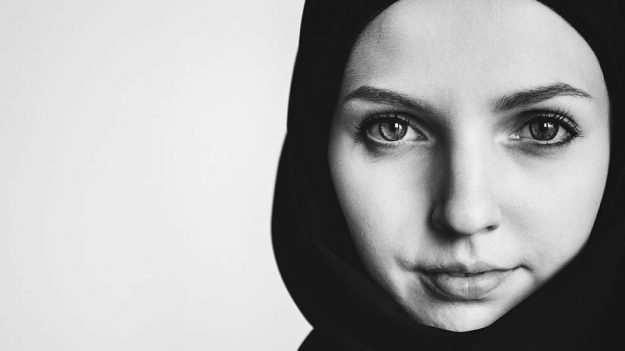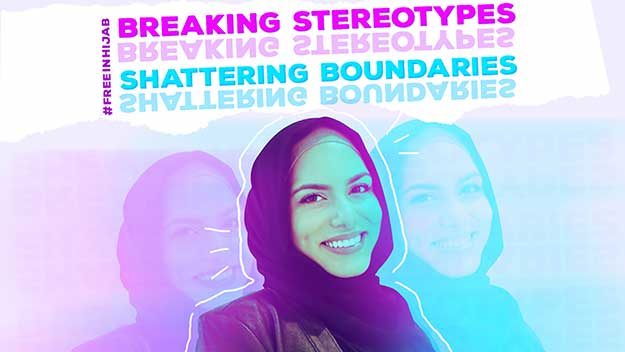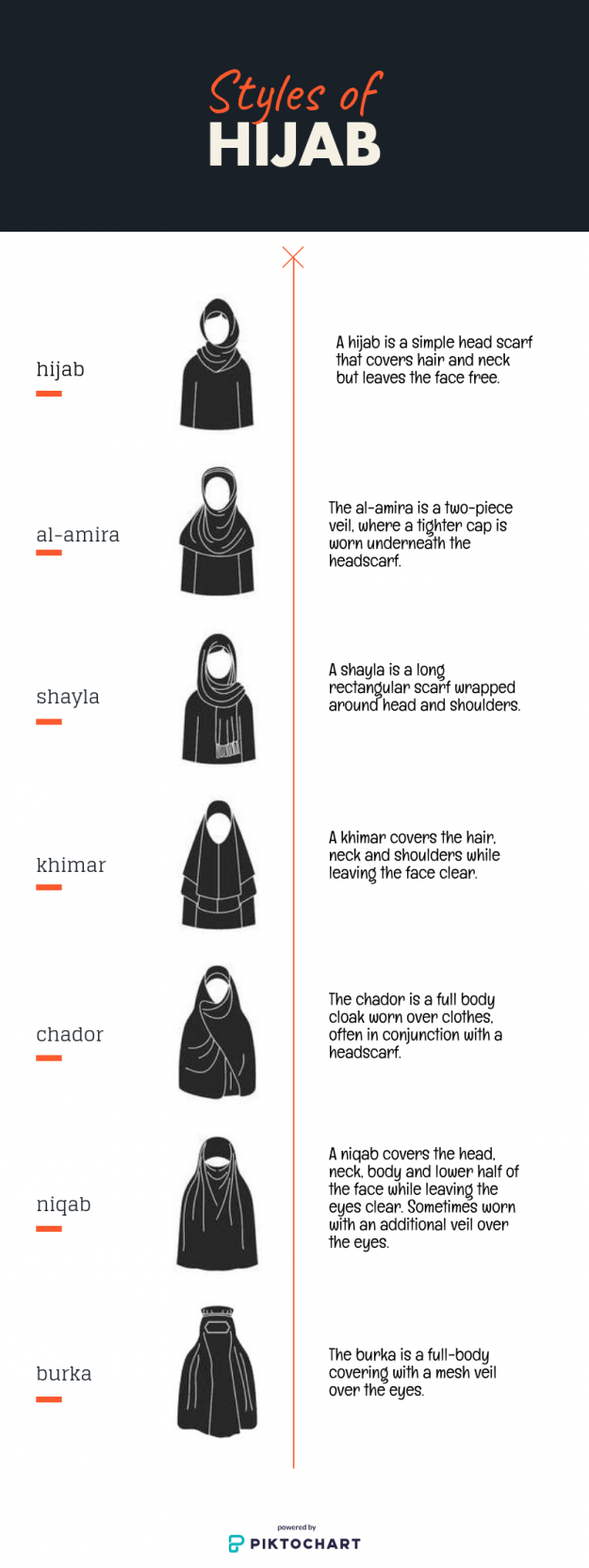World Hijab Day is an annual event that encourages women of all faiths to wear a headscarf for a day and provides a platform for awareness of the practice of modest dress in Islam.

From elegantly wrapped headscarves to intricately embroidered burqas, demur niqabs to brightly patterned chadors, the Islamic practice of hijab is one of the more visible and at times controversial element of the religion.
“You’re so distinctive compared to everyone else out there, like, when people see hijab, they know of your faith, and straight away that you’re a Muslim,” said Noor Khan, a Cardiff University student.
Hijab refers both to the practice of modesty in Islam — everything from covering one’s head to covering one’s body — as well as a scarf wrapped around a woman’s head to cover her hair and neck but keeps clear of her face.
“Since a very young age, what they tell us about hijab is, a woman, not only her hair, but her whole body, is sacred and priceless that should be kept only for herself,” said Mahsa Gourdarzi, who grew up in Iran. “And they say it’s not a limitation, it’s protection, and it adds to your prize, it makes you more respectable.”
In Western media, there are a lot of misconceptions regarding hijab, many rising from strict interpretations of sharia law by patriarchal religious extremists in the Middle East such as the Taliban and Al-Qaeda, requiring every woman to wear hijab. Iran and Saudi Arabia have laws requiring compulsory hijab, where all women must wear some form of head covering regardless of religion.
“We took these photographs because we were inspired to showcase our love for hijab, in confidence, especially at a time when it is being misrepresented and misunderstood, and overlooked outside of a surface level preface.”-Aya Mustafa, USA#FreeInHijab#WorldHijabDay pic.twitter.com/YzRDAcBWG0
— World HijabDay (@WorldHijabDay) February 1, 2019
In non-Muslim majority countries, women who do wear hijab are often targeted for Islamophobic attacks where their headcovering is forcibly removed or are subjected to discriminatory treatment simply because of the visible demonstration of their faith.
World Hijab Day
In 2013, Nazma Khan, a resident of New York, in the United States, created World Hijab Day, an annual recognition and celebration of hijab observed 1 February to help raise awareness and combat misconceptions surrounding hijab.

The idea behind World Hijab Day was to help people understand what it is like to wear hijab by inviting non-Muslim women to wear a headscarf for a day.
Four years ago, a friend of mine approached me to see if I would be interested in helping to create and observe a celebration of World Hijab Day at our college, in conjunction with discussions surrounding combating Islamophobia.
It was something I had been curious about, and was grateful I was given the opportunity to experience it in a safe environment with the support of the Muslim community at my school.
This February was the first year I interacted with people who did not know either about the day or that I was observing it, but fortunately I had a lot of really positive interactions.
It was the first year I did so not in an insular environment, and I was more than a little nervous when I stepped out of my house wearing my headscarf, even though this was the fourth year I have observed World Hijab Day.
“I think it’s a great thing,” said Asia Dirie, a Cardiff University pharmacy student. “Women supporting other women in their choices is amazing, especially in the current climate where unfortunately women who choose to wear a headscarf are targeted.”
In the past six years, World Hijab Day has gained international attention, with women in countries all over the world organising events in schools, universities and places of work.
#WorldHijabDay 2019 event in Liberia organized by The Liberian Muslim Women Network. #FreeInHijab pic.twitter.com/01otZyAdds
— World HijabDay (@WorldHijabDay) February 6, 2019
Social media posts on Twitter, Instagram and Facebook showed pictures of women in hijab, hijabi women telling their stories of why they choose to wear it and women who were wearing one for the first time, all tagging their posts with #FreeInHijab.
Although World Hijab Day is generally positively received, there are groups and individuals who oppose the event on multiple grounds.
A counter-hashtag this year was #FreeFromHijab, protesting mandatory hijab laws in places like Saudi Arabia and Iran, which require women to wear at least a headscarf in the presence of men.
Such groups believe that World Hijab Day does not address these issues, though World Hijab Day organisers have been outspoken from their beginning that they do not agree with these practices. On their website, they write, “We strongly condemn forceful implementation of the hijab. The choice should be left to the women.”
“To be honest, the first thought that came to my mind when I heard this was, ‘What about women who don’t want to wear hijab and are, you know, are forced to do that?’” said Goudarzi, and though she feels there could be more to address obligatory or compulsory hijab beyond the work done by World Hijab Day, Goudarzi does appreciate how World Hijab Day fits into raising awareness.
“Honestly, I understand that perspective,” said Noor, but she also said, “In Islam…you can’t physically force someone to wear hijab, it has to be one’s own interests, because that’s like forcing her to be someone she doesn’t want to be.”
Other counter-arguments are that women who are not Muslim should not wear hijab, that it is a form of cultural appropriation and therefore when hijab is worn by non-Muslims, the practice becomes less sacred.
However, there are multiple cultures and religions that do practice head covering and modest dress for both men and women, and World Hijab Day makes sure to recognise these other practices as something separate from the Muslim practice of hijab, while still celebrating her choice.
“I am not Muslim, but Kemetic Orthodox. My hijab is not required as a part of my faith, but for me personally, it is a sign of strength, faith, courage and hope.”-Siobhan Welch, USA#FreeInHijab#WorldHijabDay pic.twitter.com/llLVrlAB8N
— World HijabDay (@WorldHijabDay) February 1, 2019
The World Hijab Day organisation has also addressed these concerns with numerous articles on their site as well as posts that distinguish World Hijab Day as a celebration of women’s choice to wear hijab.
“For me hijab is a part of my identity,” said Dirie, echoing hundreds of other women speaking up on World Hijab Day. “[It is] a way for me to feel connected to my faith. It empowers me in a way, as I’m choosing to dress the way I do, and taking ownership of my body and the choices I make regarding it, despite other people’s thoughts and opinions.”
I feel very honoured to have been able to share this day with the hijabi women I know, and all the wonderful conversations I had on this and subsequent days as a result.
It was also a really wonderful opportunity to learn more about what hijab means to women, like Goudarzi, who have experienced the oppression of mandatory hijab, and learn more about her experiences.
All of my interactions with others were very positive, and I felt like I had the opportunity both to help others learn more about hijab and to learn more about what it means to women who do practice this aspect of their religion.
For me, World Hijab Day is a powerful example of how women from across the world and religions come together to celebrate a simple practice and share their experience.
In My Eyes
With support and blessings from my sisters in الله, I wear a headscarf for @WorldHijabDay to stand in solidarity with those who wear #hijab and those who have had their right to wear hijab taken from them. I wear one so that soon all will have the choice to be #freeinhijab. pic.twitter.com/ul0ARbF7a5
— Hannah Robertson (@hcrobertson18) February 1, 2019

